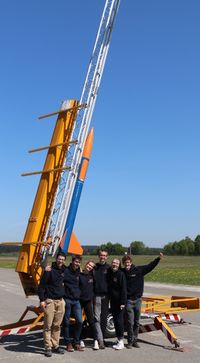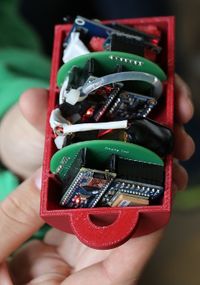ENG-CANSAT-BELGIUM
What is CanSat?
CanSat Contest simulates the fly of miniaturized satellites named CanSat (Can Satellite).
The CanSat is an autonomous devices enclosed within the volume of a soda can.
The volume of a CanSat has the following characteristics: 66mm diameter, 115mm height for a masse of 350gr.
As the CanSat have small volume and are very affordable, the CanSat contest is great for learning more about space technologies.
The CanSats are deployed from a rocket (the launch vehicle) at a height of about 3000m depending on the competition (see all the details in the contest rules).
The CanSats are not orbited and are always deployed in the athmosphere. So they always comes back to the earth.
The CanSat volume cannot increase until the CanSat is deployed out of the rocket.
This means that external antenna is allowed only after the CanSat left the rocket.
A parachute (that increase the volume of the CanSat) is usually used to limit damages. The aim is to reuse the CanSat for several missions.
In Europe, the CanSat contest includes two missions:
- Mission 1: mesure pressure and temperature and transmit data in real time.
- Mission 2: free choice mission (using Intertial Measurement Unit, GPS, MPX differential pressure sensor, etc).
How to subscribe the contest?
In Europe, the CanSat competition is promoted by the ESA (source).
For Belgium, the CanSat Belgium competition is promoted by InnovIris (CanSat Belgium NL, CanSat Belgium FR, CANSAT Belgium FaceBook )
About this Wiki
MC Hobby does promote, mainly in French, the Arduino Open-Source plateform, MicroPython, Raspberry-Pi, coding, electronics to made knowledge freely available de the mass.
This CanSat Belgium Wiki is one of the MC Hobby documentation project.
Getting Started
Test the sensors
Mission 1
description of mission1.
Mission 2
Optionnal: adding GPS.
Ressources
Optionnal: adding GPS.
TRAVAUX EN COURS. A well designed Antenna can increase the communication distance
Other ressources:
- CanSat Europe on WikiPedia - Lot of informations
- Parachute

